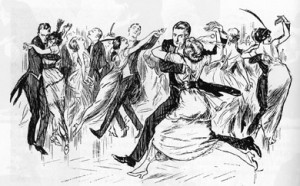FRIDAY, 8 OCTOBER 2010
Quarks are one of the most elementary building blocks in the world of particle physics. Protons are made up of three quarks, bound together by the strong nuclear force. However, quarks themselves are virtually massless; the mass of a proton arises from the oscillation of its constituent quarks. In other words, everything around us has mass because of the oscillation of quarks!Quarks also possess a property called 'spin' that is mathematically analogous to the rotation of an every-day object. This 'spin' can be in a left-handed or a right-handed sense. Theoretically left-handed and right-handed quarks should oscillate independently, but in practice they don't. Left-handed and right-handed quarks oscillate in tandem, pairing off like dancers on a dance-floor, explains Kim Splittorff, co-author of the latest research, published in Physical Review Letters [1]. Moreover, the new research shows that this pairing off of quarks can be described mathematically by large quantities of random numbers arranged in rectangular matrices.
This research comes just as particle physics' Large Hadron Collider (LHC) starts to produce its first meaningful results. This new theory based on random numbers "is a powerful tool that provides an entirely new understanding of the numerical data" says Splittorff. Clearly, exciting times lie ahead for particle physicists.
Wrtten by Tim Middleton

